28 Wild Animals in Egypt [Wildlife in Egypt]
Want to know more about wildlife in Egypt?
Discover 28 wild animals in Egypt in this post, as well as interesting facts about them. 🇪🇬
Learn All About Egyptian Animals
Ready to learn all about Egyptian animals?
I’ve always been fascinated by animals, and by how they can be so different from one country to another. In this guide, we’ll focus on the many animals Egypt has on the land, in the sky, and under water.
I’ve split the guide into 4 categories:
- Native animals from Egypt
- Endangered animals of Egypt
- What is the Egyptian national animal?
- How many animals native to Egypt?
Let’s dive in right away with our first category!
Native Animals from Egypt
Egypt is an African country located in the northwestern part of the continent, above the Sahara. It is a place of significant culture and historical influence, as it has one of the longest histories of any country, dating back to the 6th millennium BCE. It is bordered by the Gaza Strip, Israel, Libya, and Sudan, and its capital and largest city is Cairo, which counts more than 10,025,000 inhabitants (but more than 21,323,000 if you include the metropolitan area!).
An interesting part of the country that I wanted to tackle is its wildlife. In light of that, I have listed the best of it, and I hope you will love learning what animals live in Egypt.
Here’s the Egypt animals list.
1. Pale gerbil
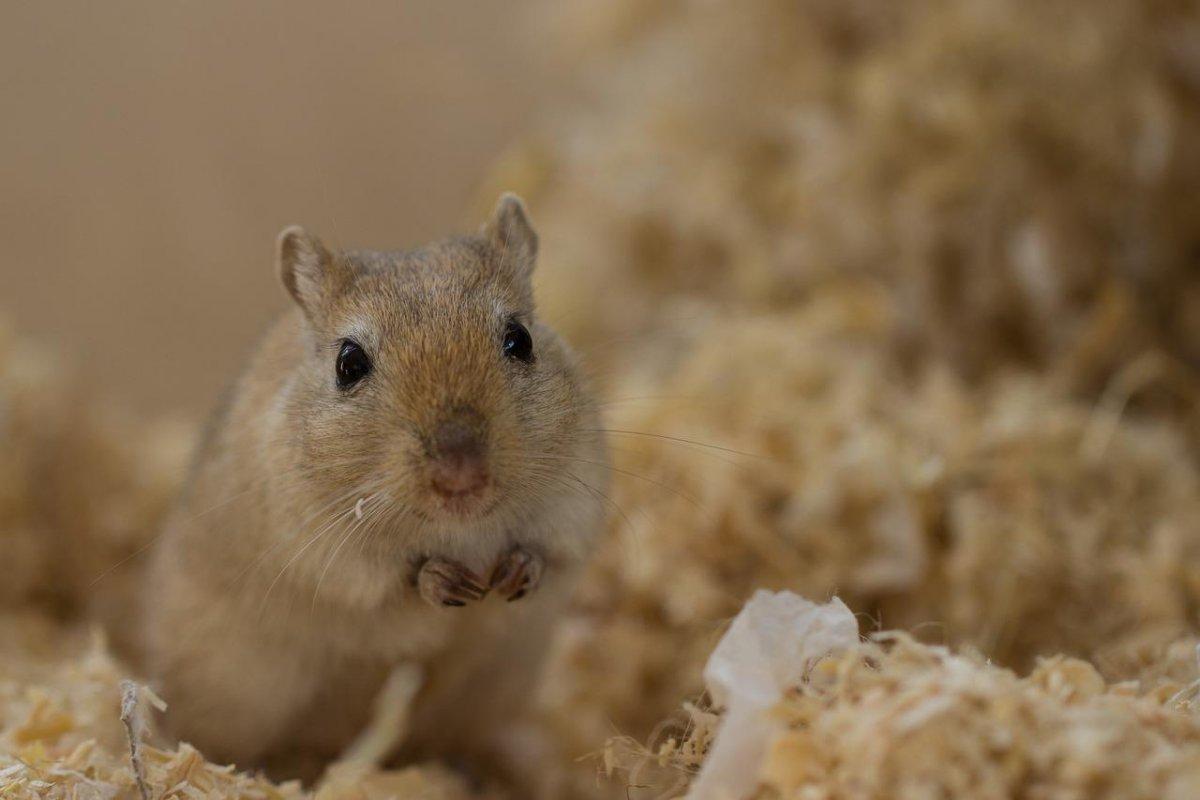
- Name: Pale gerbil
- Scientific name: Gerbillus perpallidus
- Conservation status:
What a cute way to start off this list! The pale gerbil, also known as the pallid gerbil, is a species of gerbil endemic to Egypt. It can only be found in the northwestern part of the country and has orange fur with white underparts.
On average, it has a length of 22 to 27 cm / 8.6 to 10.6 in. It is often kept as a pet, just like its cousin the Mongolian jird, another gerbil.
2. Egyptian vulture
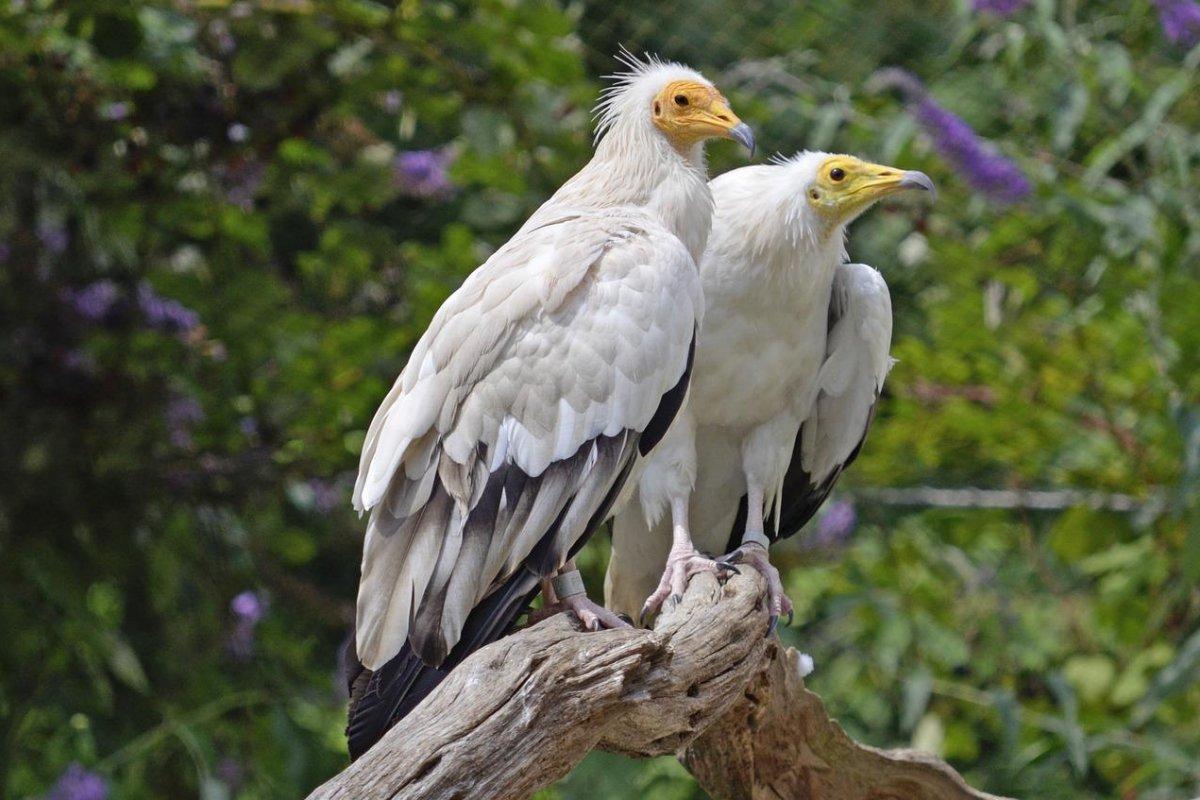
- Name: Egyptian vulture
- Scientific name: Neophron percnopterus
- Conservation status:
The Egyptian vulture is assuredly one of the most beautiful, unique, and majestic birds you will see in Egypt. Contrary to what its name suggests, it can actually be found in lots of African countries, as well as on the Iberian Peninsula and in western Asia and the Indian subcontinent.
It is also known as the scavenger vulture or the pharaoh’s chicken, and it mainly feeds on carrion. It is endangered because of electrocution, accidental poisoning, and hunting.
3. Aardwolf
- Name: Aardwolf
- Scientific name: Proteles cristata
- Conservation status:
You might have never heard of it, but the aardwolf is a species of insectivorous mammal native to Africa. Also known as the maanhaar-jackal, the civet hyena and the termite-eating hyena have a habit of secreting substances from their anal gland, just like a civet.
Most of its diet is made of termites, and it can lap up as many as 250,000 termites in a single night with its long and sticky tongue!
4. Dorcas gazelle
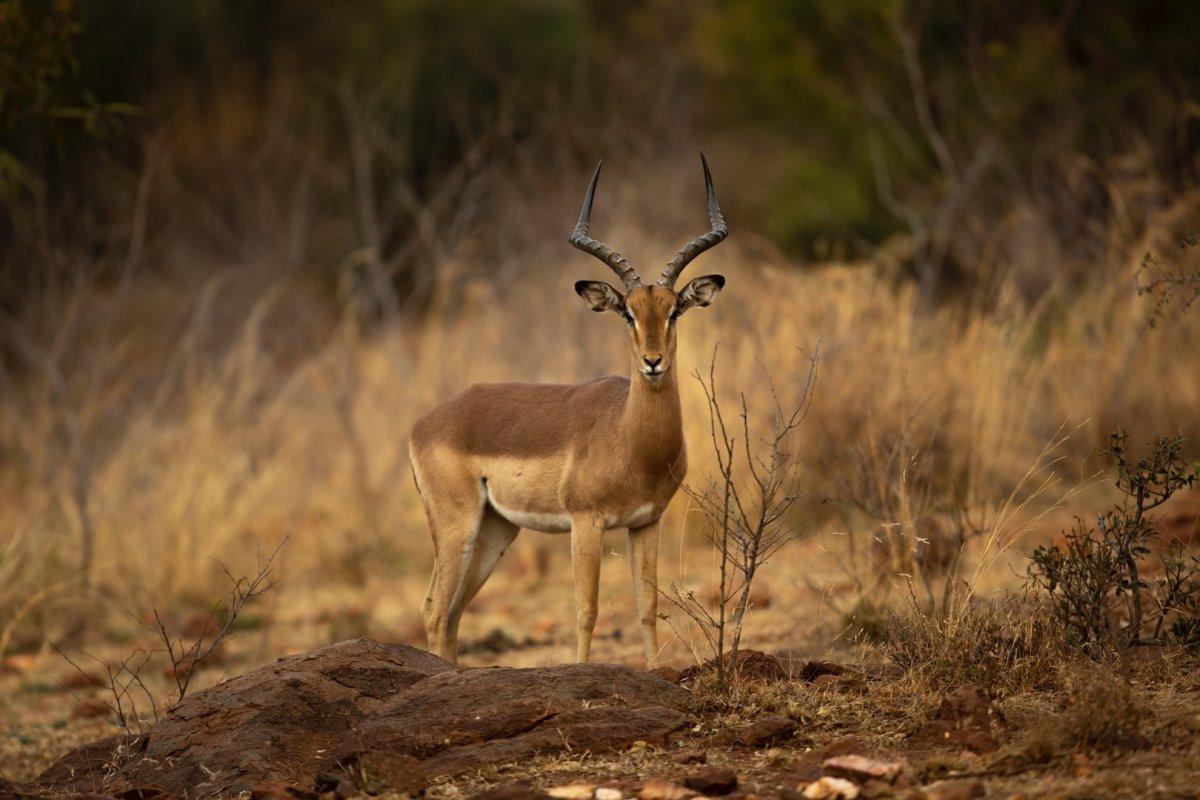
- Name: Dorcas gazelle
- Scientific name: Gazella dorcas
- Conservation status:
The Dorcas gazelle, also known as the ariel gazelle, is a species of small gazelle native to North Africa. It has a lot of subspecies that live in the mountain desert, semidesert, grassland, and steppe habitats, and there are about 35,000 to 40,000 individuals in the wild.
Despite this, this gazelle is endangered due to predators (humans, cheetahs, Arabian wolves, lions, and leopards), but also human expansion and habitat conversion.
5. Arabian wolf
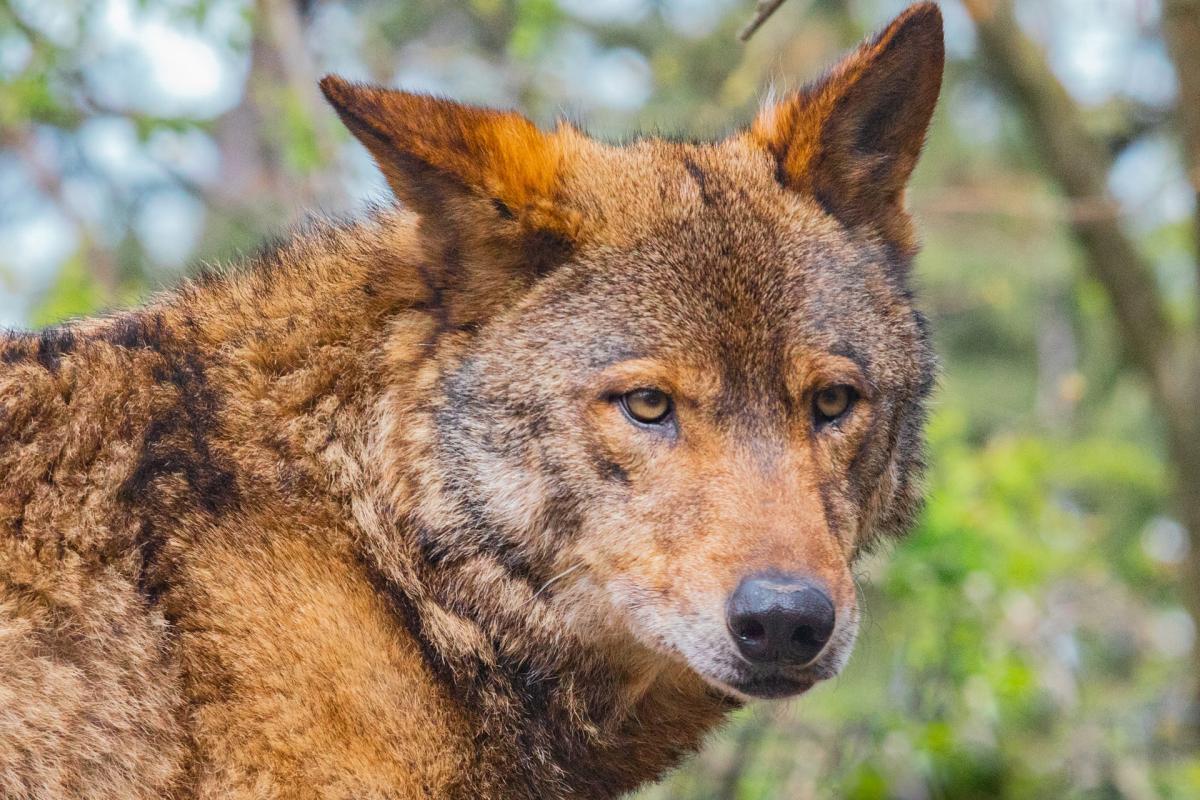
- Name: Arabian wolf
- Scientific name: Canis lupus Arabs
- Conservation status:
The Arabian wolf is one of many subspecies of the famous gray wolf. It is native to the Arabian Peninsula, as well as northwestern Egypt. It is the smallest of all wolf subspecies and is particularly adapted to living in desert environments.
This wolf eats small to medium-sized prey of any kind and is therefore omnivorous. Though its conservation status is not assessed, it is quite rare and its range is severely declining, making it most likely an endangered species.
6. Barbary sheep
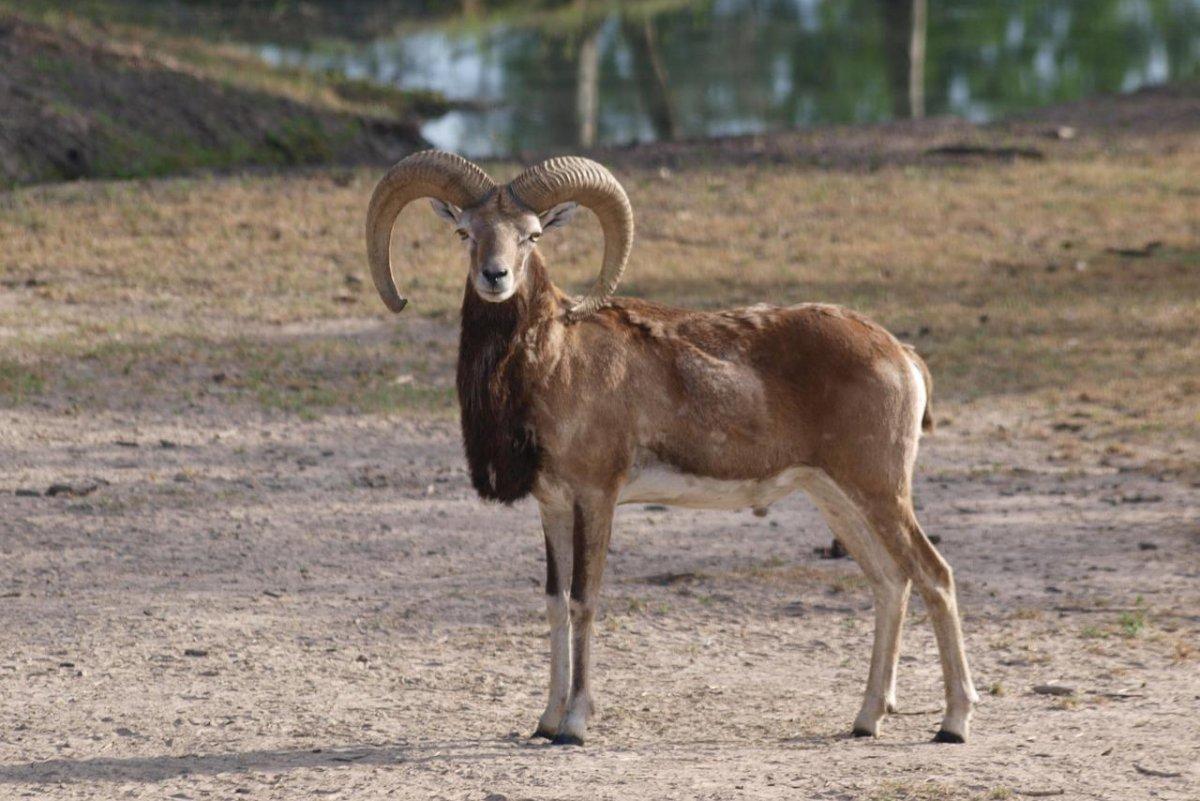
- Name: Barbary sheep
- Scientific name: Ammotragus lervia
- Conservation status:
The Barbary sheep, locally known as the aoudad or the mouflon (in former French territories), is a species of caprine native to North Africa, and it has been introduced to southern Europe and North America, among other places.
This sheep inhabits rocky mountains where it grazes on bushes, grasses, and lichens. Interestingly enough, it can have enough water from food, but if water is available, it will not hesitate to drink it.
7. Fennec fox
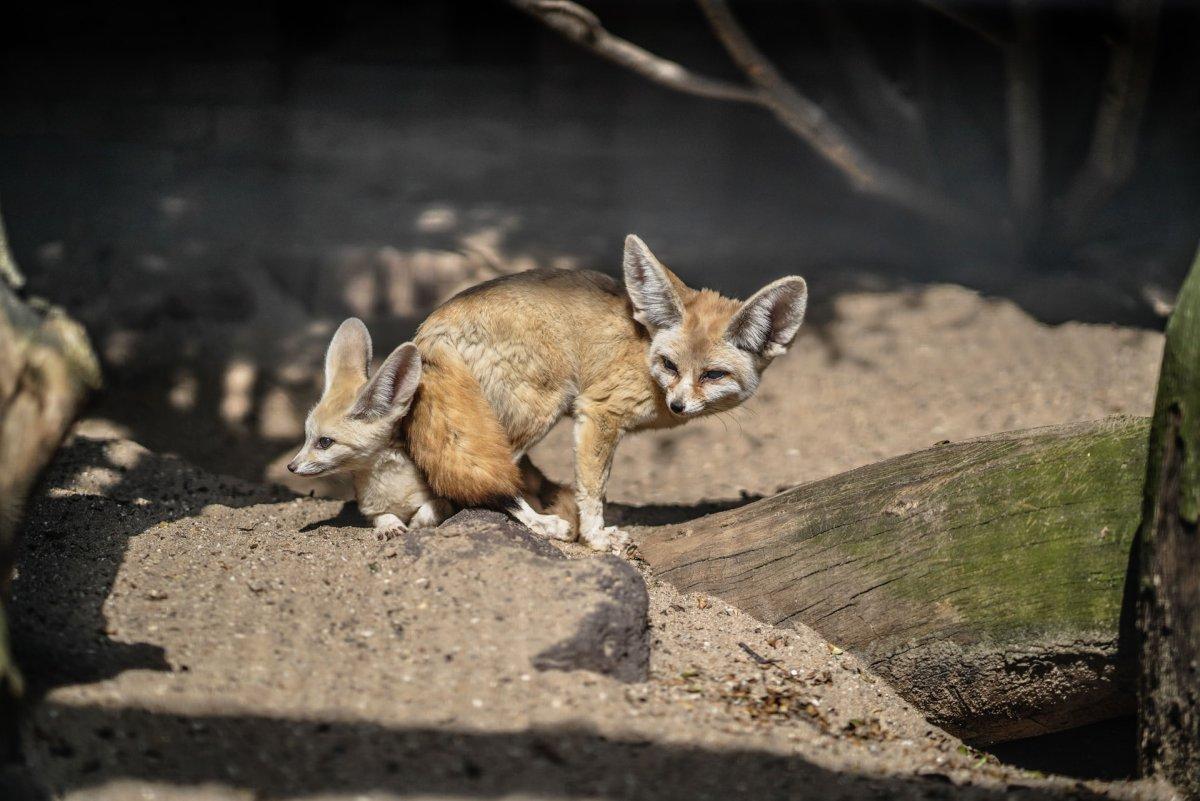
- Name: Fennec fox
- Scientific name: Vulpes zerda
- Conservation status:
The fennec fox is a small species of crepuscular fox native to the desert areas of North Africa. It is an important cultural symbol, and it represents Algeria’s national football team.
This fox has unusually large ears that are very useful to dissipate heat. On top of that, it can also hear prey moving underground thanks to its very sensitive hearing, and it mostly feeds on birds, small mammals, and insects.
8. Egyptian cobra
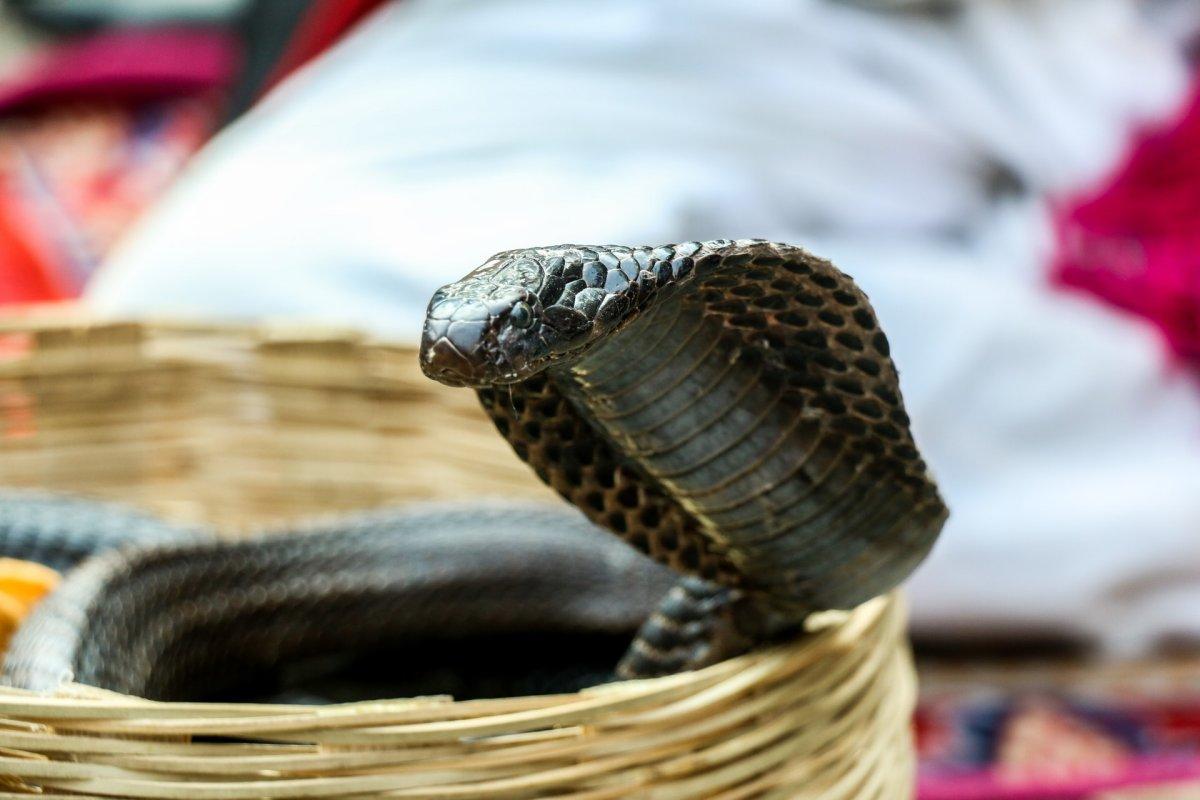
- Name: Egyptian cobra
- Scientific name: Naja haje
- Conservation status:
The Egyptian cobra is yet another example of species that has Egypt in its name but can be found throughout lots of African countries, mostly in the northern half of the continent.
This snake is the most venomous one in all of North Africa, and it has caused tons of snakebite incidents in humans. Its venom affects the nervous system and stops the nerve signals from being transmitted to muscles, lungs, and the heart.
9. Egyptian Mau
- Name: Egyptian Mau
- Scientific name: Felis catus
- Conservation status:
The Egyptian Mau is a subspecies of the domestic cat, a medium-sized breed. It is one of the few naturally spotted breeds of cats, and it originates from Egypt, as its name implies. This subspecies is considered one of the ancestors of the domestic cat, and it is the fastest of them all: it has long hind legs and a unique flap of skin.
There are 6 possible colors for the Egyptian Mau: silver, bronze, black, smoke, caramel, and blue.
10. Saharan horned viper
- Name: Saharan horned viper
- Scientific name: Cerastes cerastes
- Conservation status:
I don’t mean to scare you from visiting Egypt with these dangerous snakes, but it is the reality: some animals are quite hazardous in the country!
The Saharan horned viper, also known as the desert horned viper, is one of them. Though some individuals do not have any, its main characteristic is the little horns on top of its head. It is a venomous viper that causes necrosis, vomiting, and nausea, as well as cardiotoxicity. Better stay alert!
11. Egyptian weasel
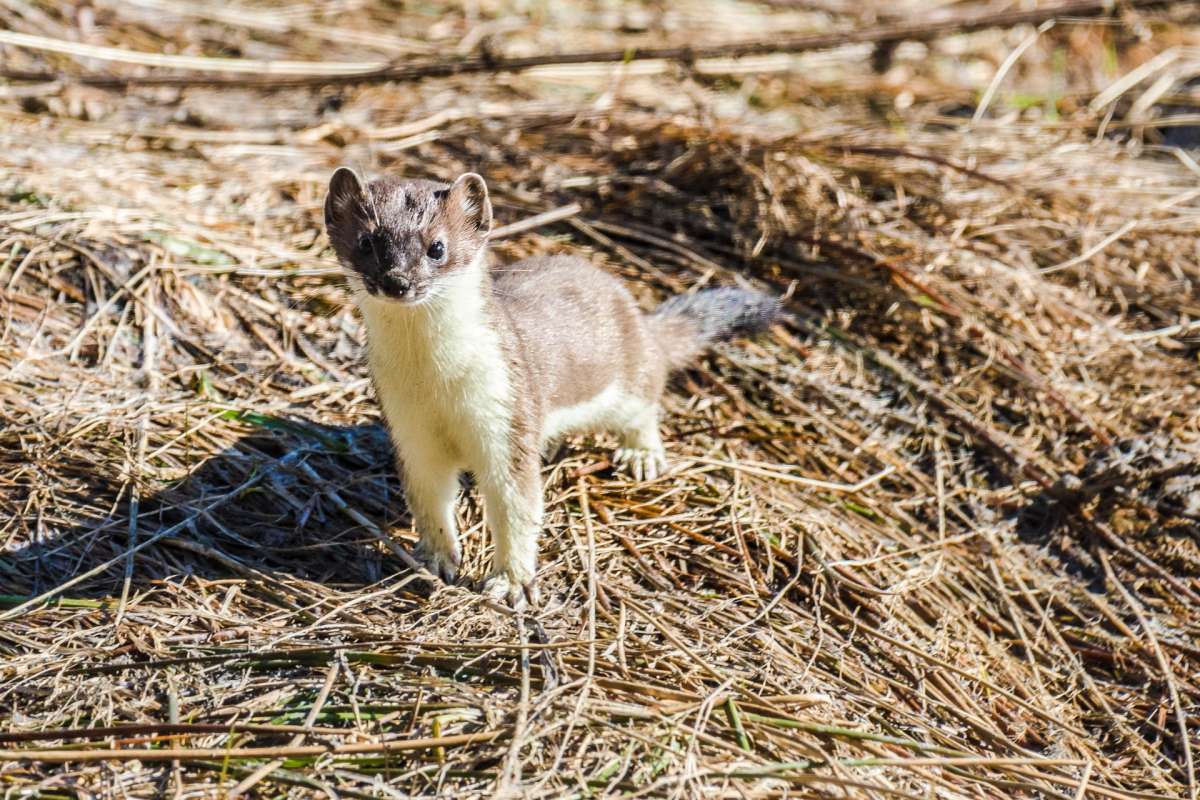
- Name: Egyptian weasel
- Scientific name: Mustela nivalis subpalmata
- Conservation status:
It is true that Egypt does not have that many endemic species, but the Egyptian weasel is one of them: it can only be found in the northern part of the country and used to be considered a distinct species.
The Egyptian weasel is not threatened for now and is listed as of least concern. Its potential threats are chemicals, diseases, and predation by domestic dogs. Now, we wait and see what the future holds for this small mammal.
12. Scimitar-horned oryx
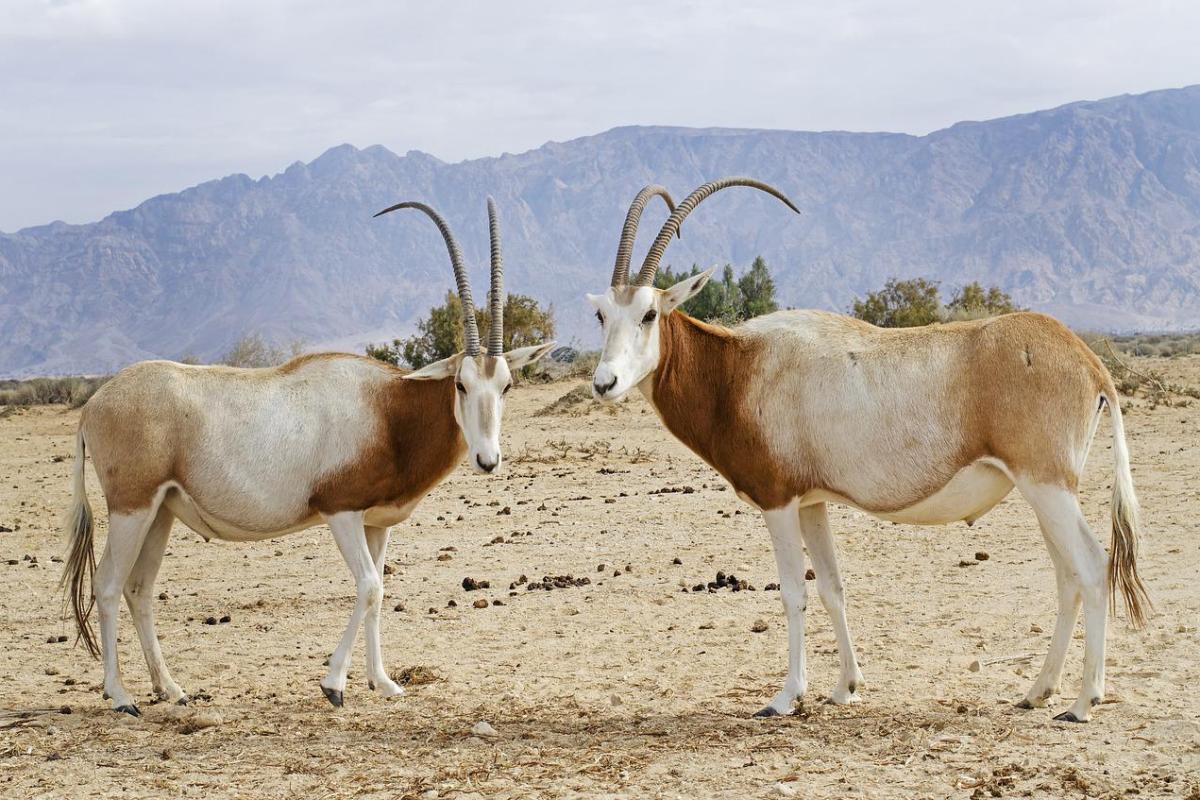
- Name: Scimitar-horned oryx
- Scientific name: Oryx dammah
- Conservation status:
The scimitar-horned oryx, also known as the Sahara oryx, was once widespread in all of North Africa. Nowadays, it only exists in captivity and has been extinct in the wild since 2000. However, a small group was released in the wild in 2016. Over time, it slowly began to grow, and 60 new calves were born in 2021: there are now about 400 individuals in the wild! With that, there is hope for a change in conservation status in upcoming years. Don’t be fooled though, a lot remains to be done to give back the scimitar-horned oryx its former glory.
13. Striped polecat
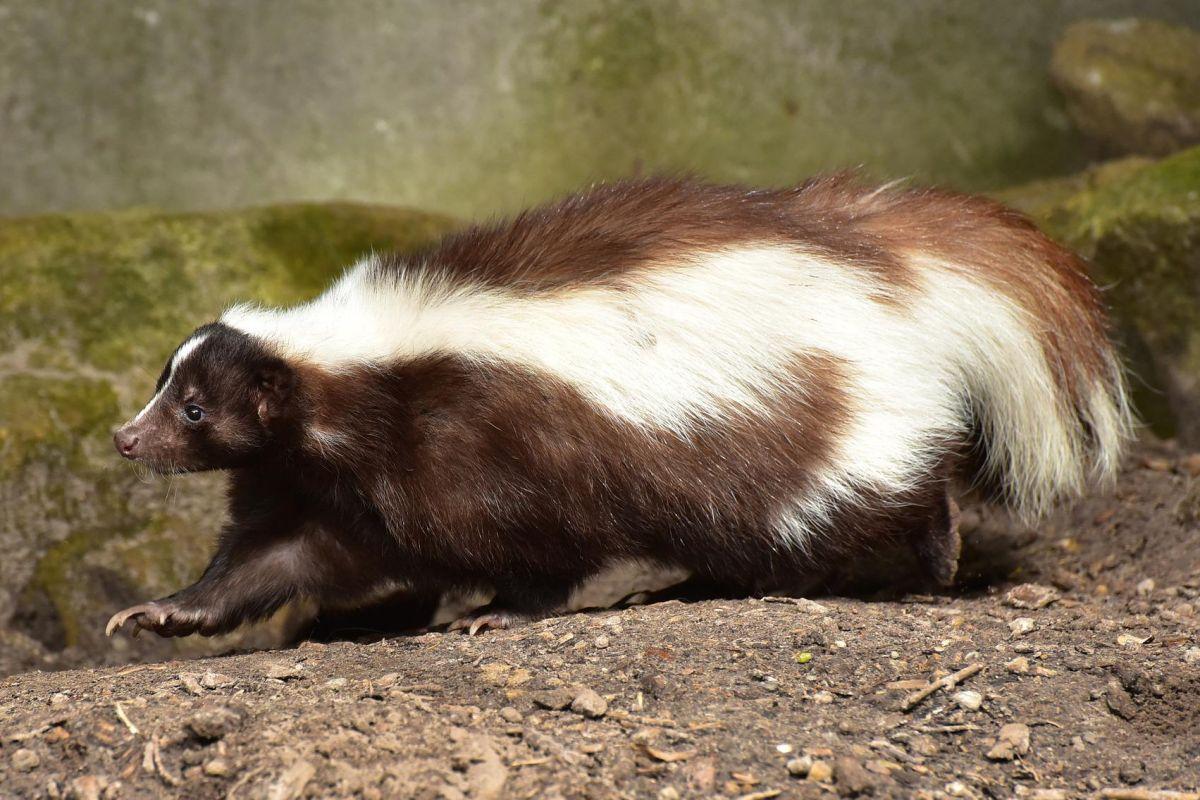
- Name: Striped polecat
- Scientific name: Ictonyx striatus
- Conservation status:
The striped polecat, also known as the African polecat, the zorilla, or the African skunk, is a species of mustelid native to most of sub-Saharan Africa, as well as parts of North Africa. It thrives in dry and arid climates such as open country and savannas.
Similar to other mustelids, this species is a carnivore. It feeds on small rodents, amphibians, insects, snakes, and birds, and needs to eat often due to its small stomach!
14. African wild ass
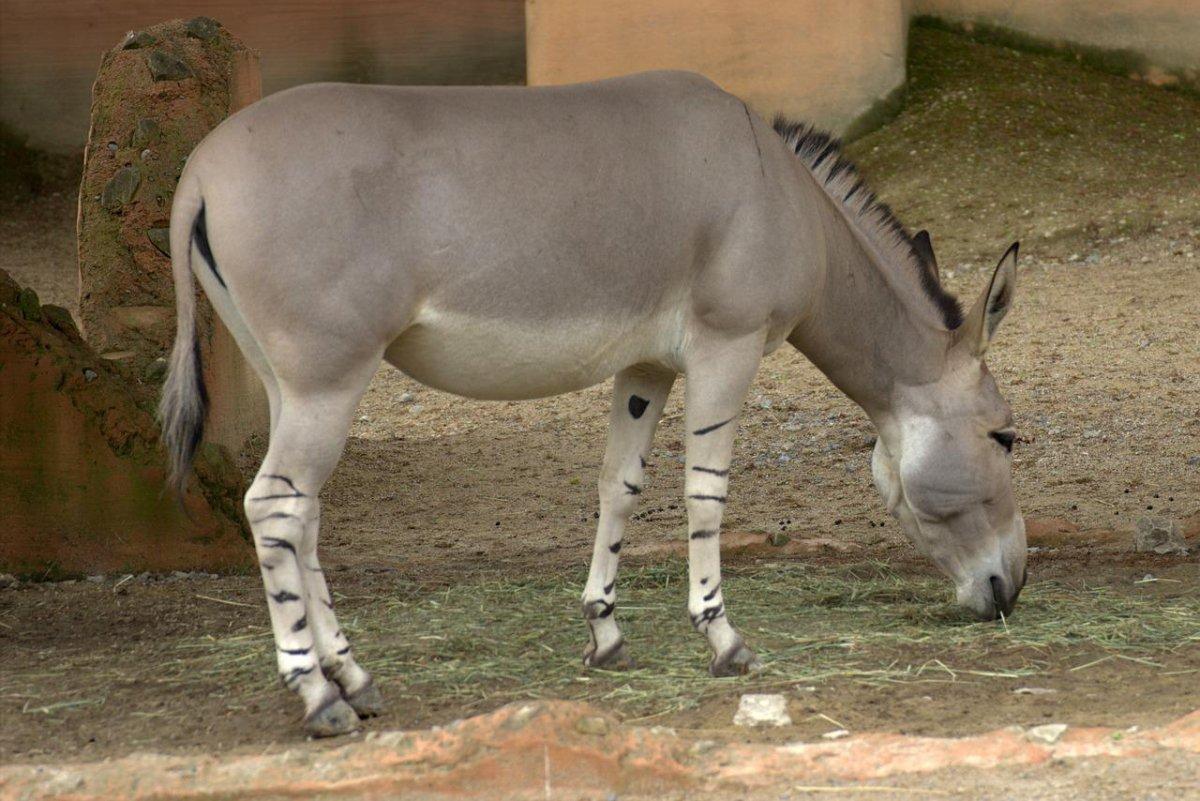
- Name: African wild ass
- Scientific name: Equus africanus
- Conservation status:
The African wild ass, also known as the African wild donkey, is a species of wild donkey believed to be one of the ancestors of the modern domestic donkey. We are not quite sure if it still lives in Egypt, because of the very few individuals remaining (only about 570).
While it used to have a much wider range, the African wild donkey has a much smaller range. It was not killed or disappeared for other reasons, but it actually just became domesticated! Because of this, it is under no threat of extinction whatsoever, but wild populations are dwindling rapidly.
15. False smooth snake
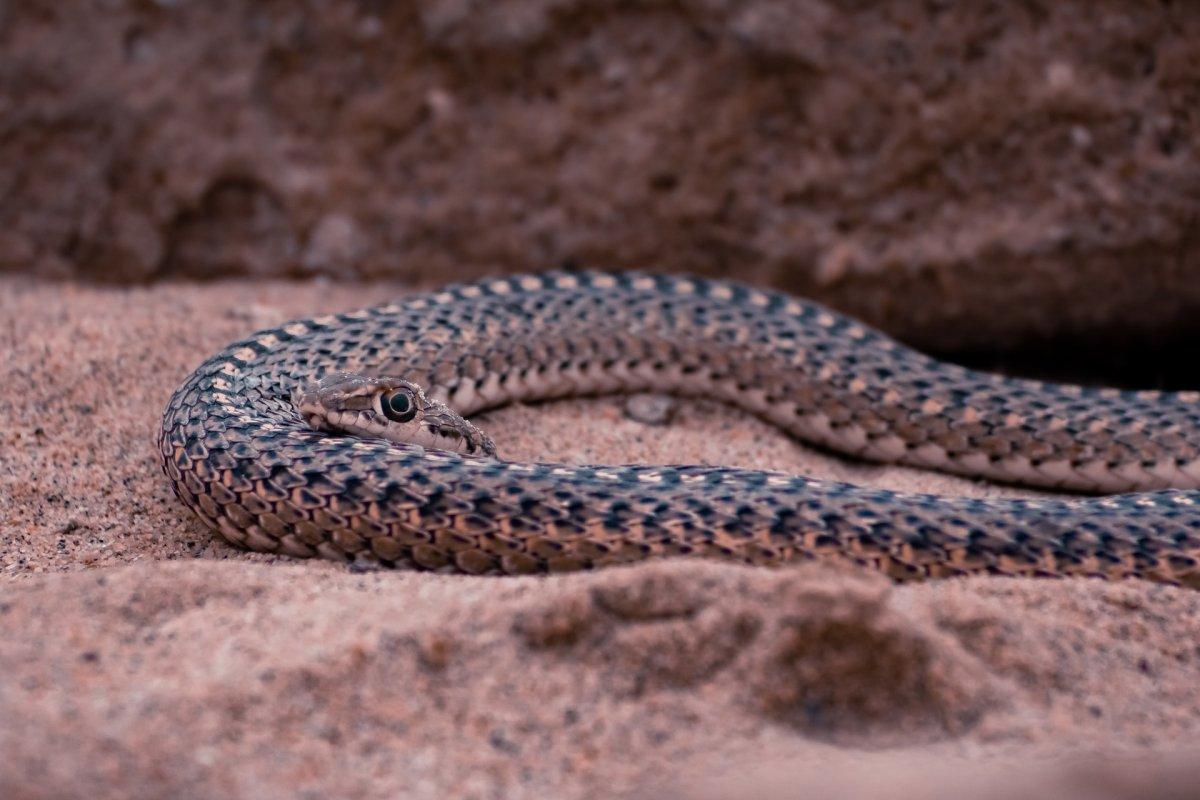
- Name: False smooth snake
- Scientific name: Macroprotodon cucullatus
- Conservation status:
The false smooth snake is yet another species of venomous snake that can be found in the wilderness of Egypt. It is endemic to the Mediterranean Basin and lives in temperate forests, dry shrubland, rocky areas, pastureland, rural gardens, and urban areas.
Its diet is mostly made of small lizards, nestling birds, and small mammals. Its venom is only mild, as it is quite effective on lizards, but not on humans whatsoever.
16. Nile Delta toad
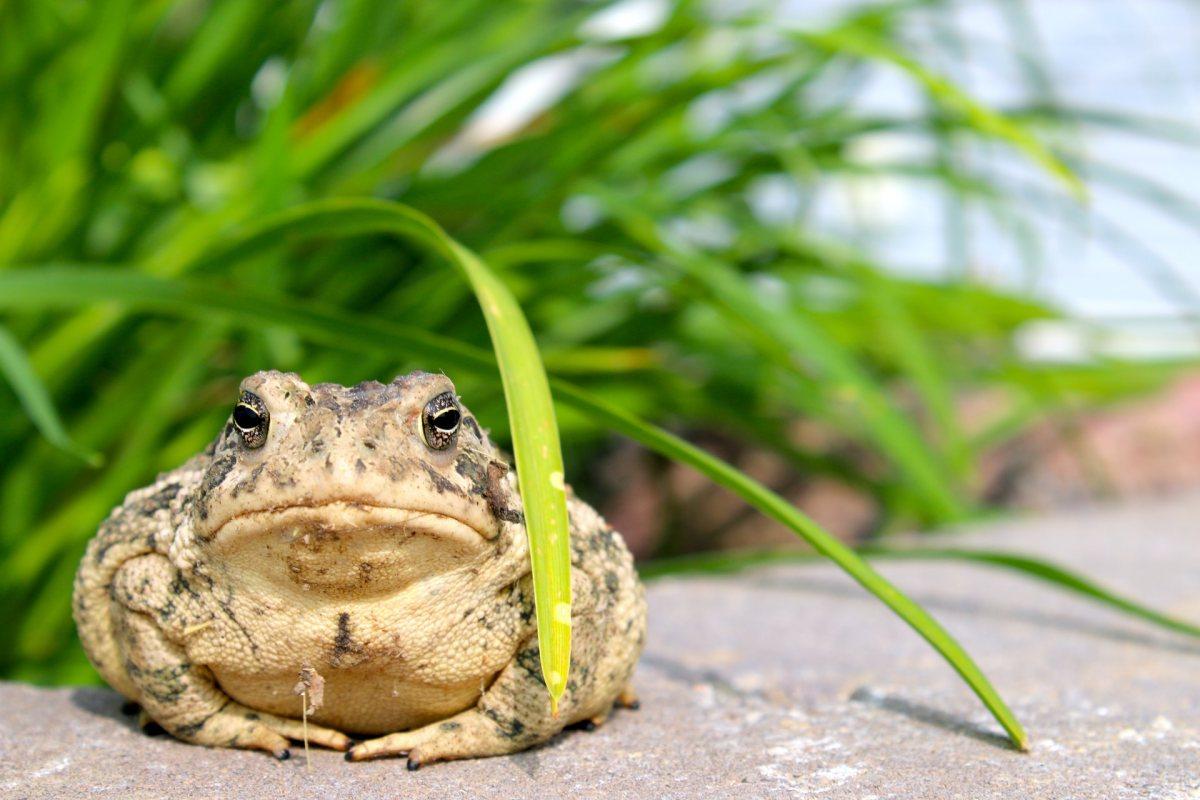
- Name: Nile Delta toad
- Scientific name: Amietophrynus kassasii
- Conservation status:
The Nile Delta toad, also known as the Damietta toad, is a species of toad endemic to Egypt. As its name suggests, it can be found from the Nile Delta to Luxor, a southern city. It lives in swamps, arable land, urban areas, ditches, canals, and freshwater marshes, and is a relatively small species.
This toad has adapted to live in rice fields and cultivated land, and is therefore under no threat of extinction. On top of this, it lives in protected areas.
17. Nile crocodile
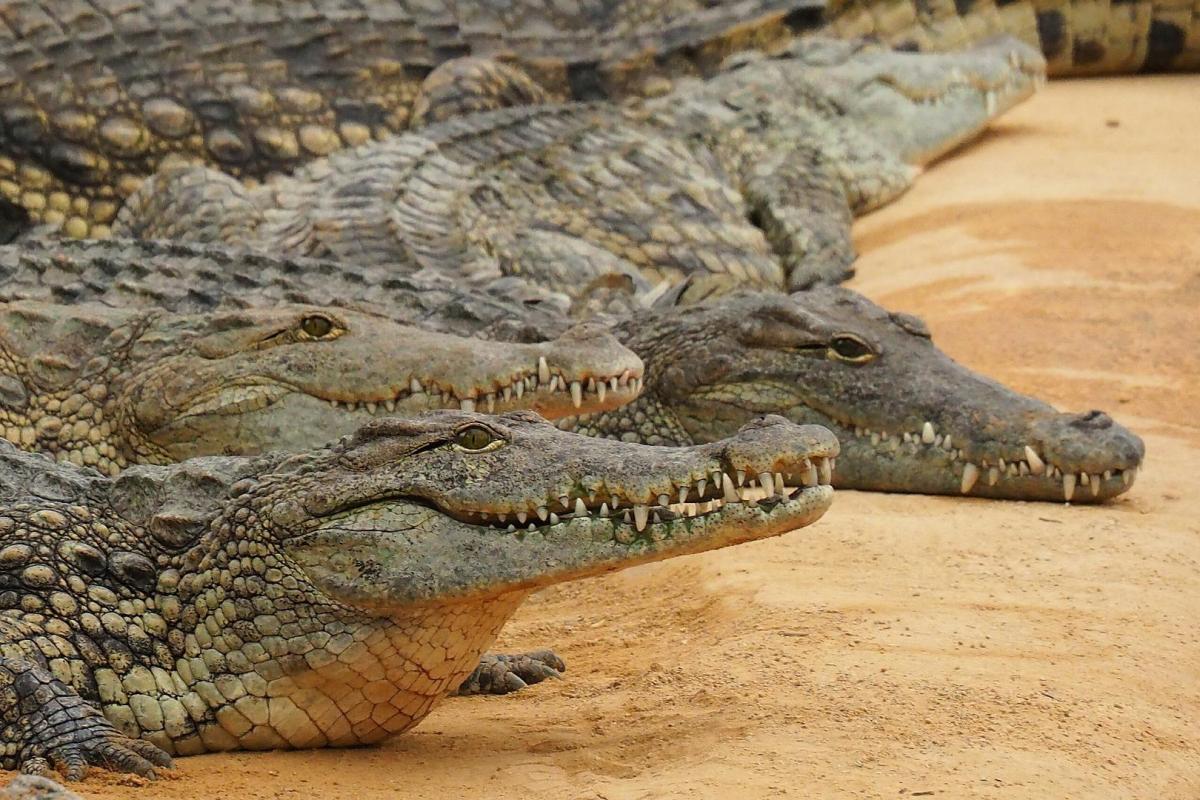
- Name: Nile crocodile
- Scientific name: Crocodylus niloticus
- Conservation status:
It is finally time to talk about one of the most notorious animals from Egypt, the Nile crocodile. Despite its name, this species of crocodilian can be found throughout almost the entirety of sub-Saharan Africa, as well as in northwestern parts of the continent and even on the island of Madagascar.
It is a social animal that usually shares basking spots and food sources such as big carcasses and schools of fish.
18. African softshell turtle
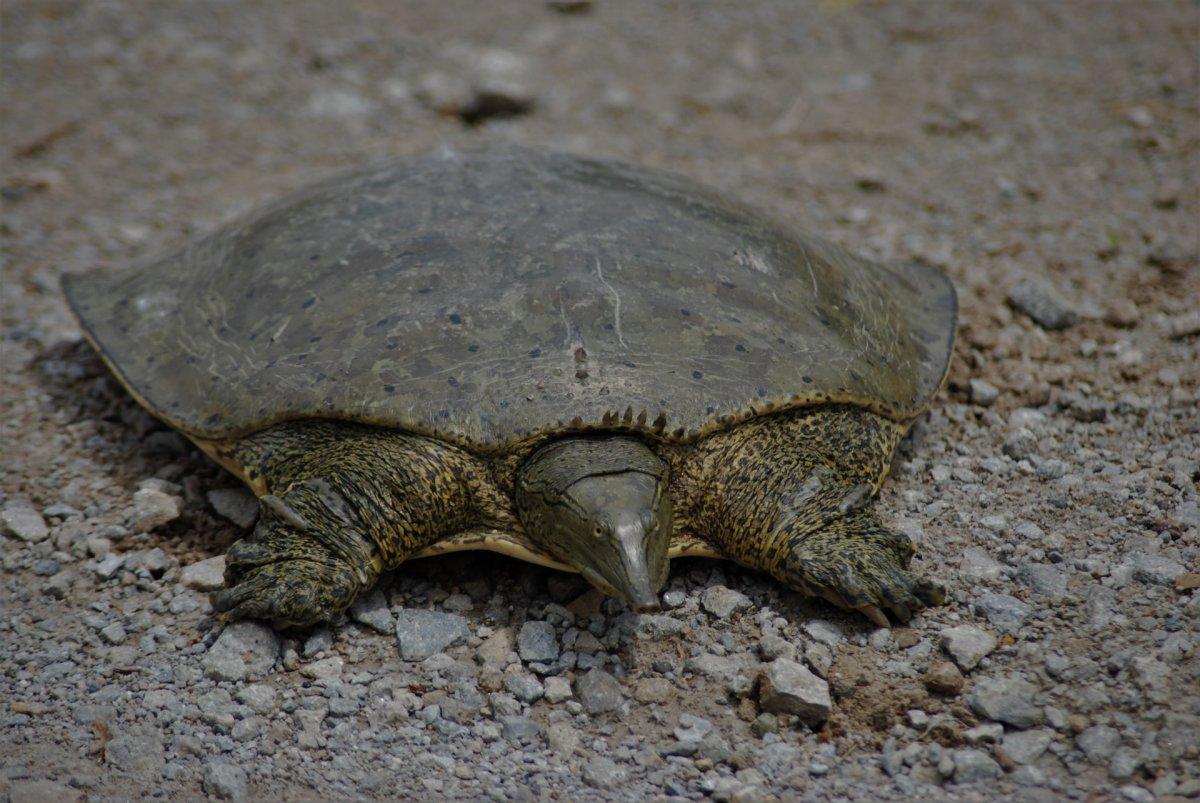
- Name: African softshell turtle
- Scientific name: Trionyx triunguis
- Conservation status:
The African softshell turtle, also known as the Nile softshell turtle, is a species of freshwater turtle native to Africa, Israel, Turkey, Syria, and Lebanon.
Despite its name, it is not the only softshell turtle on the continent. It is a large animal that usually weighs about 40 kg / 88 lbs, and that once reached 120 cm / 3.9 ft. Besides, the African softshell turtle is omnivorous and feeds on crustaceans, fish, leaves, and palm seeds.
19. Striped hyena
- Name: Striped hyena
- Scientific name: Hyaena hyaena
- Conservation status:
The striped hyena is a species of hyena native to North and East Africa, as well as the Middle East, the Indian subcontinent, and the Caucasus. There are currently less than 10,000 mature individuals in the wild, which is why it is considered near threatened. It is suffering from decay in prey base as well as deliberate and incidental persecution.
This hyena is the smallest of all true hyenas, and it is the national animal of Lebanon.
20. Nubian ibex
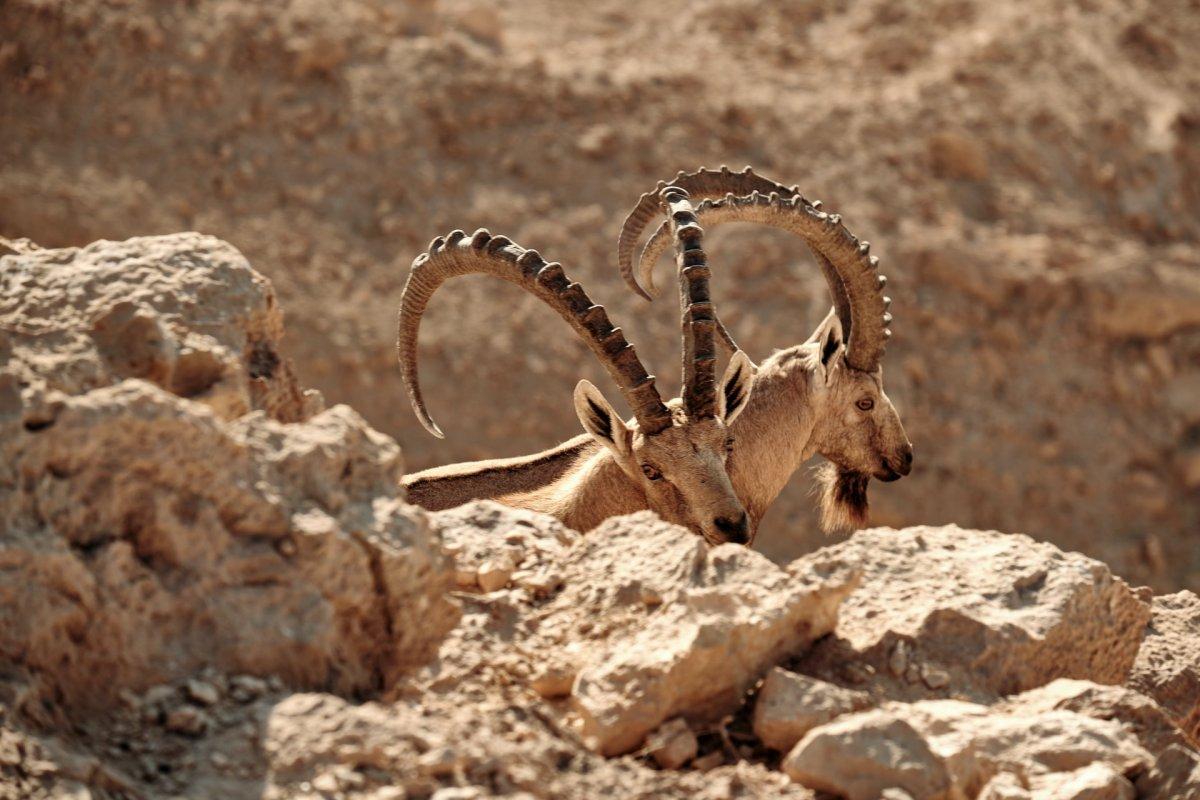
- Name: Nubian ibex
- Scientific name: Capra nubiana
- Conservation status:
The Nubian ibex is a species of goat native to northern and northeastern Africa, as well as the Middle East. It lives in the desert, and there are about 1,200 individuals in the wild.
Generally speaking, the population of the Nubian ibex is declining, and since there are fewer than 10,000 individuals, it is considered vulnerable. The main reasons for this decline are competition with livestock, habitat destruction, and hunting pressure.
21. Rhim gazelle
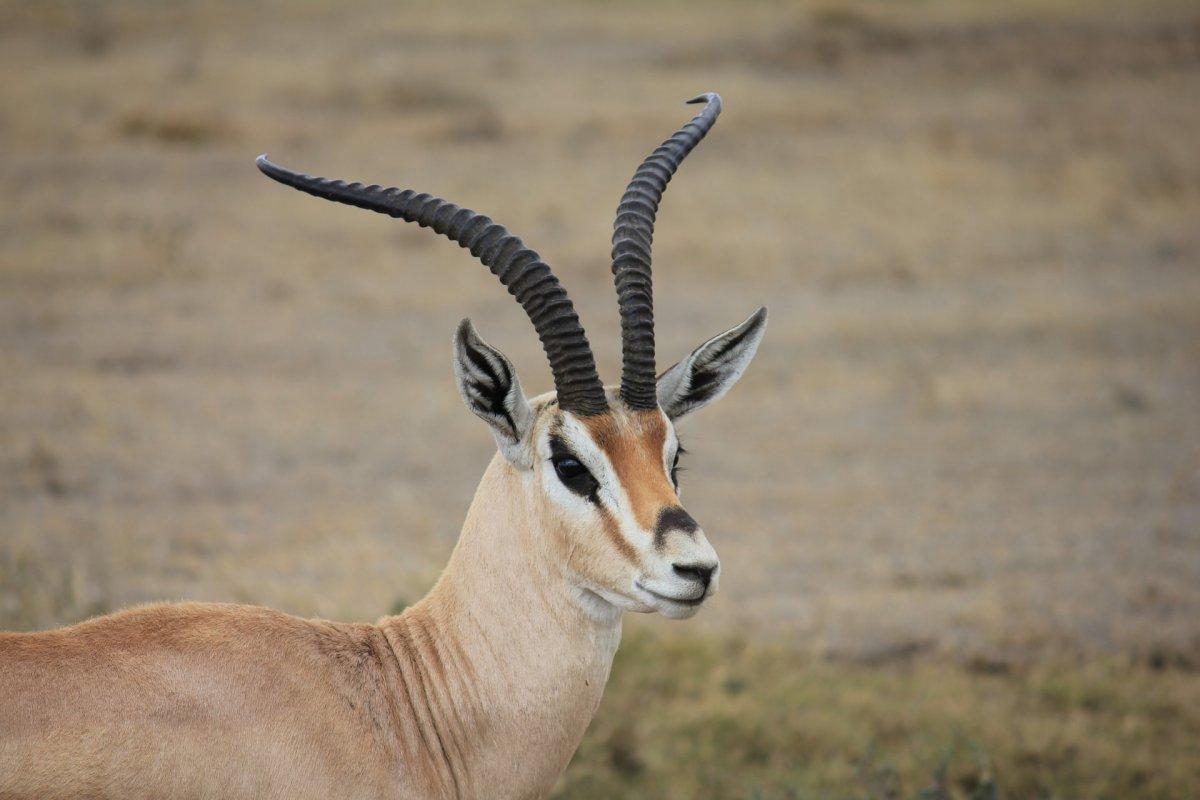
- Name: Rhim gazelle
- Scientific name: Gazella leptoceros
- Conservation status:
The Rhim gazelle, also known as the African sand gazelle, Loder’s gazelle, or the slender-horned gazelle, is a species of gazelle adapted to desert life and native to Egypt, Algeria, Tunisia, and Libya.
Back in the 1970s, this animal was in serious danger, as its population was rapidly declining due to hunting. There are now only 300 to 600 individuals left in the wild, but it is much more protected nowadays.
22. Greater hoopoe-lark
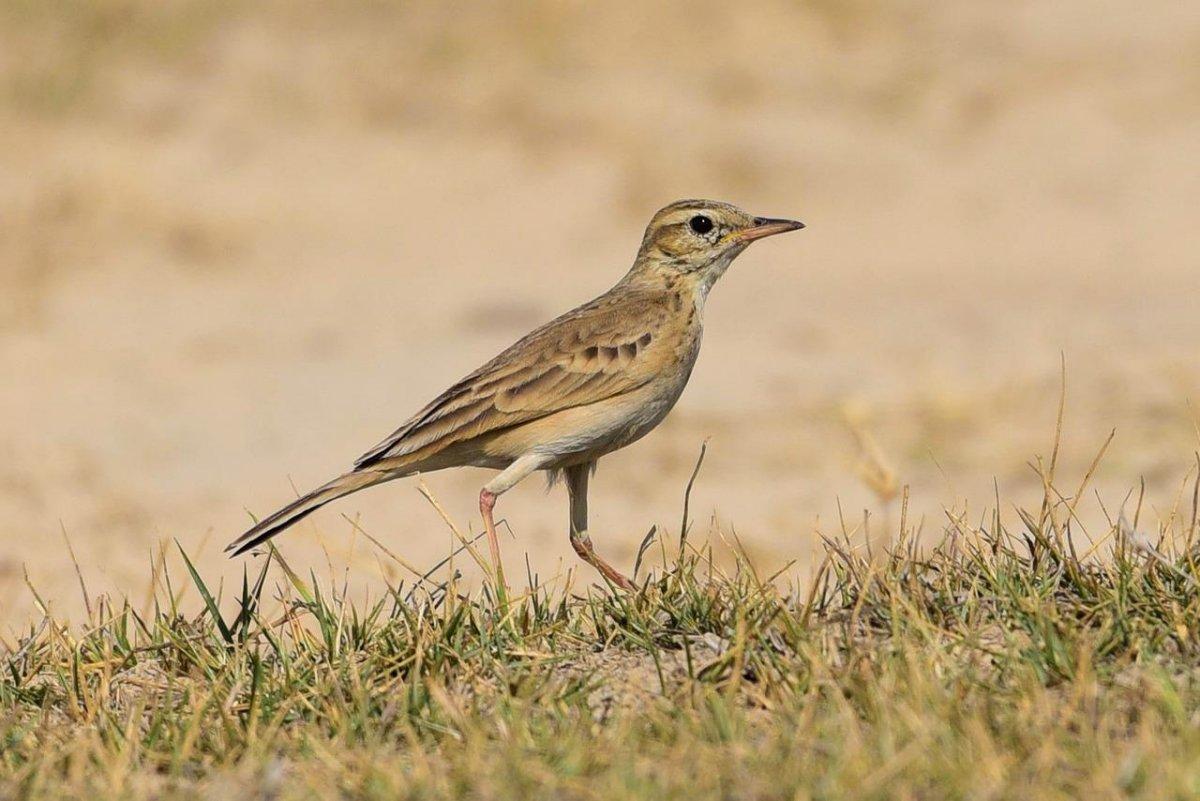
- Name: Greater hoopoe-lark
- Scientific name: Alaemon alaudipes
- Conservation status:
The greater hoopoe-lark, previously known as the large desert lark or the bifasciated lark, is a species of passerine bird native to most of North Africa, the Arabian peninsula, Afghanistan, Syria, and the Indian subcontinent.
It is a large bird with long legs, a slender body, and gray plumage. It either lives in solitude or in pairs and forages in the ground to find food. Before flying, young greater hoopoe-larks can run swiftly.
23. Sand partridge
- Name: Sand partridge
- Scientific name: Ammoperdix heyi
- Conservation status:
The sand partridge is a species of game bird from the pheasant family, native to Egypt, Israel, and Arabia. It has a very close relative, the see-see partridge, that can be found from Turkey to Pakistan.
This partridge is a resident breeder, which means it does not migrate. Instead, it lives in an open and hilly country and usually lays 5 to 7 eggs. Its diet is very varied, as it can feed on insect food as well as plenty of seeds.
24. Dromedary
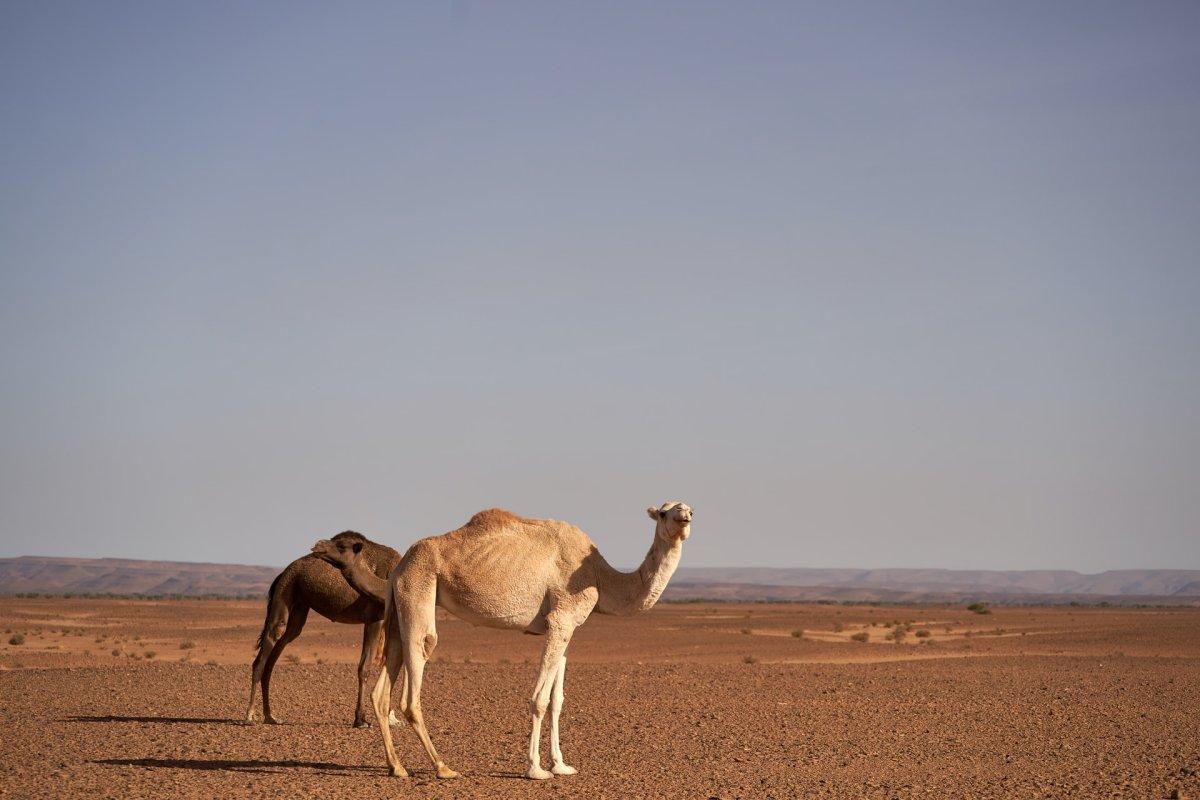
- Name: Dromedary
- Scientific name: Camelus dromedarius
- Conservation status:
The dromedary, also known as the Arabian camel, is a species of ungulate with one hump on its back, opposite to the 2 the camel boasts.
It is most active during the daytime and has been widely domesticated, which is why it is under no threat of extinction. In the wild, it lives in herds of about 20 animals, with a leading dominant male. Its diet is made of desert vegetation and foliage.
25. Arabian leopard
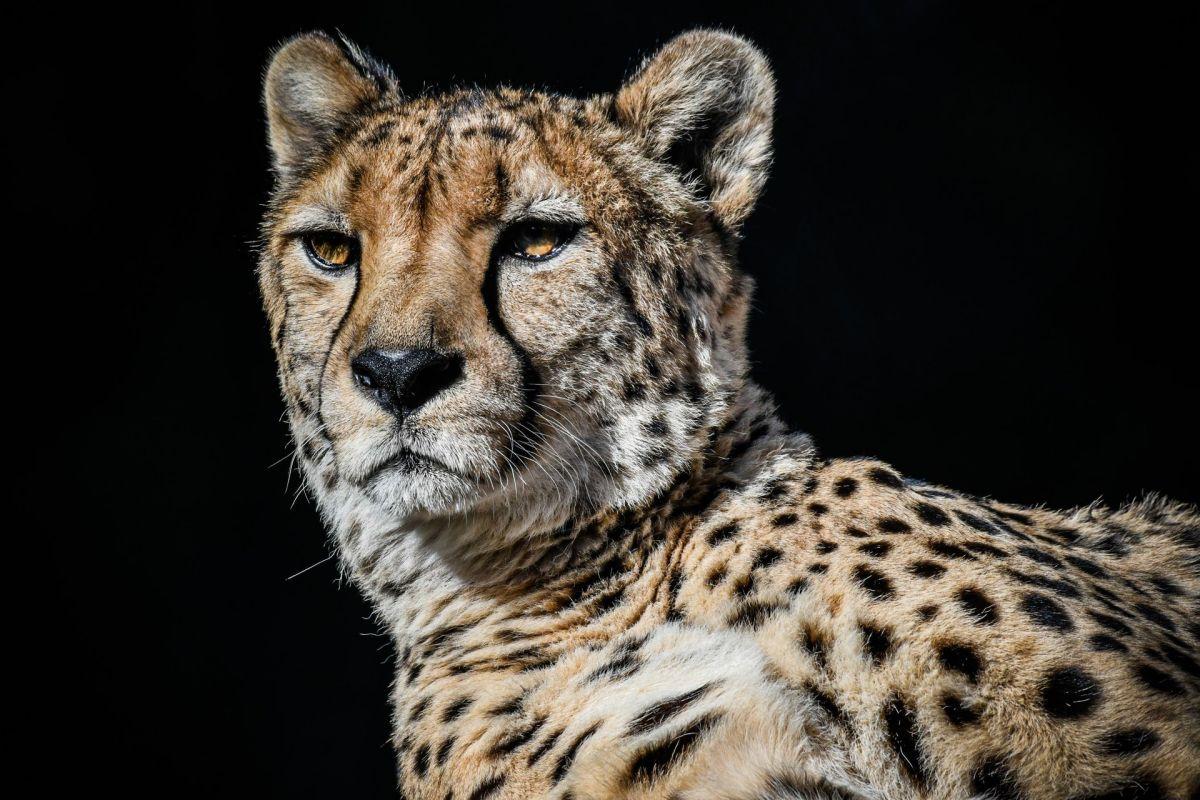
- Name: Arabian leopard
- Scientific name: Panthera pardus nimr
- Conservation status:
While it is quite rare to see a leopard in such an arid environment as most of Egypt is, there is actually one species that can be seen in the country: the extremely rare Arabian leopard.
This elusive species of wild cat might already be locally extinct in Egypt, and there are at best 200 mature individuals left in the wild. Subpopulations are fragmented and isolated, and there are no more than 50 animals in each of them.
26. Sinai baton blue
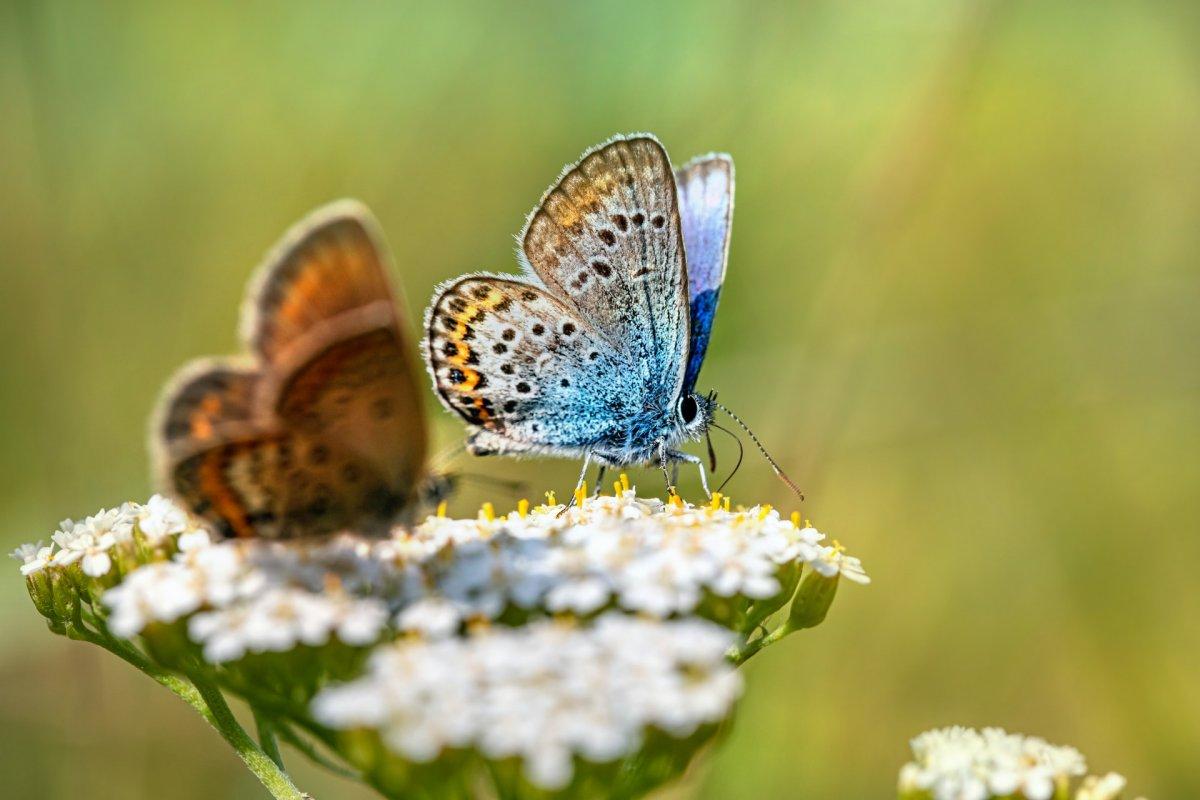
- Name: Sinai baton blue
- Scientific name: Pseudophilotes sinaicus
- Conservation status:
I will give it to you, it is quite unusual for a list like this to feature very small animals, but I had to talk about one of the world’s smallest butterflies: the Sinai baton blue.
This butterfly lives in the mountains of the Sinai Peninsula in Egypt. It is critically endangered due to habitat destruction, over-collection of plants, and climate change. Though it is quite hard to spot, let us hope that the Sinai baton blue will recover from all of this.
27. Lesser Egyptian jerboa
- Name: Lesser Egyptian jerboa
- Scientific name: Jaculus jaculus
- Conservation status:
Do you love small animals? I have another one for you! The lesser Egyptian jerboa is a species of small rodent native to Africa and the Middle East. It feeds on grasses and seeds and looks like a tiny kangaroo due to its unusually large hind legs as well as its very long tail.
This animal is nocturnal and lives in burrows. It inhabits sandy and rocky areas.
28. Barbary lion
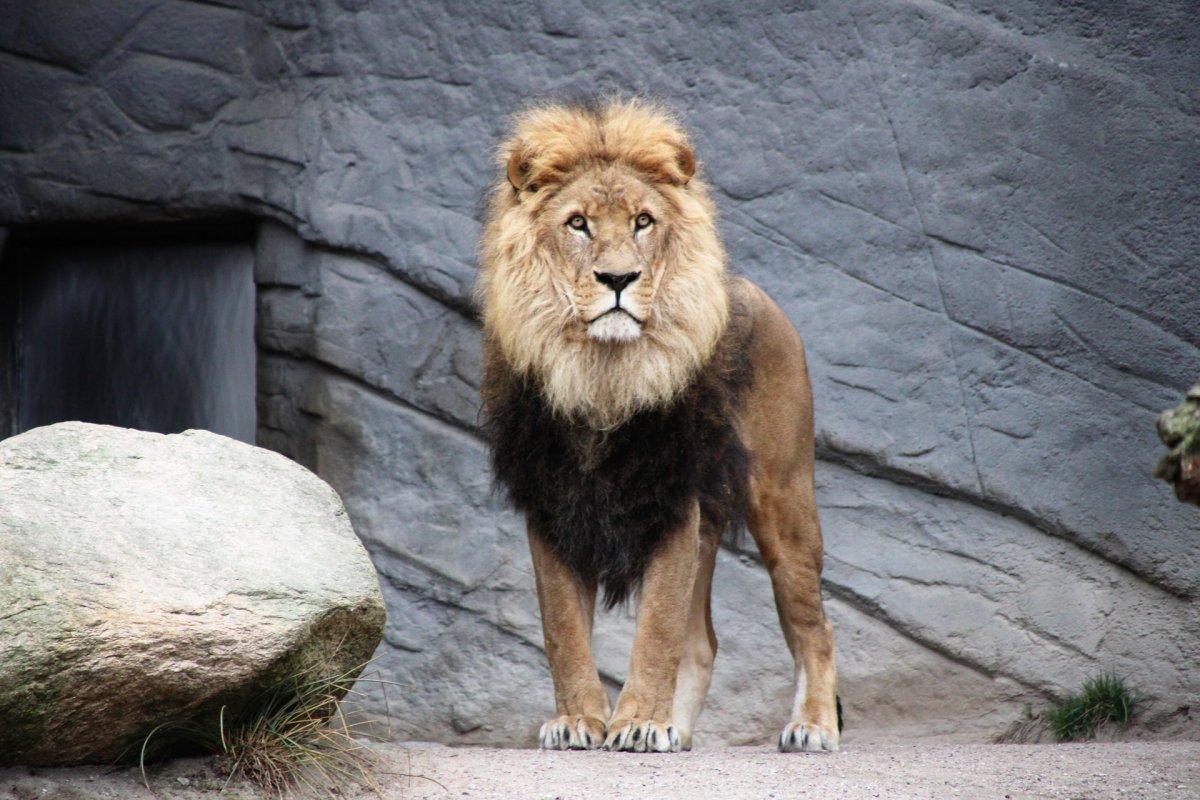
- Name: Barbary lion
- Scientific name: Panthera leo
- Conservation status:
A while ago, the Barbary lion, also known as the Egyptian lion, the North African lion, the Berber lion, or the Atlas lion, roamed the mountains and deserts of Egypt, among other countries. Since the middle of the 1960s, this majestic creature has been extinct in the wild.
The good news is that it used to be considered a distinct species of lion, but is actually very similar to those of Central and West Africa, and it is in the same group as the Asiatic lion.
—
So there you have them, these were my 18 animals of the Egyptian wildlife. I hope you enjoyed this list and that you learned something new today.
In case you want to learn more about animals in the country, feel free to keep reading, as I still have lots of things to tell you about:
Endangered Animals of Egypt
This is definitely the saddest part of the list, but it is very important to raise awareness. Because of this, let’s go through the list of endangered animals in Egypt.
Here are the animals in danger of extinction in Egypt.
- Scimitar-horned oryx
- Halavi guitarfish
- Sand tiger shark
- Addax
- African wild ass
- Slender-billed curlew
- and 22 more…
- Lappet-faced vulture
- Gray reef shark
- Mediterranean monk seal
- Steppe eagle
- Whale shark
- and 38 more…
To see the full list of endangered species in Egypt, head over to the International Union for Conservation of Nature’s Red List.
What is the National Animal of Egypt?
The national animal of Egypt is the steppe eagle.
The steppe eagle is a large species of bird of prey. It is majestic and is a symbol of might and pride.
Even among other eagles, it is a unique species: it specializes in hunting ground squirrels but also attacks other small mammals. One of the biggest threats to this wonderful animal is electrocution: because of it, its global population has already declined by more than half, and it is severely endangered. Hopefully, it won’t become a relic from the past, just like a lot of monuments in Egypt…
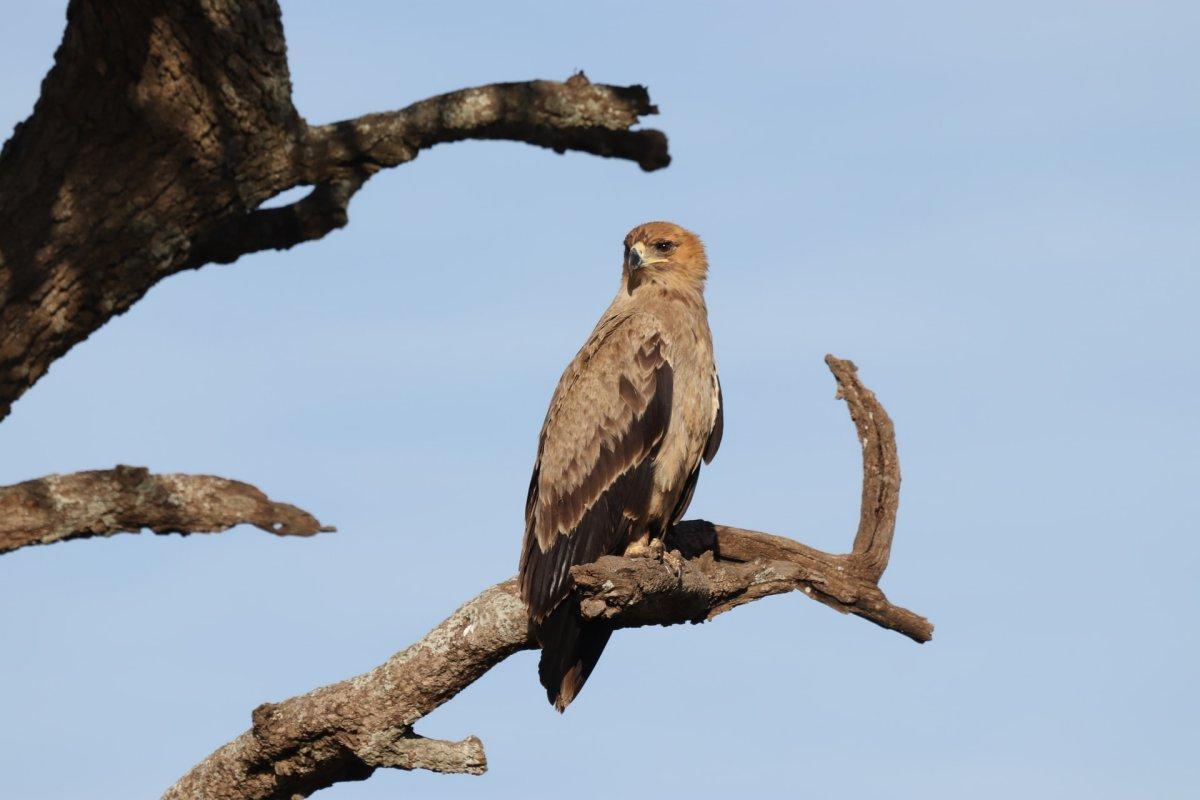
How Many Animals Native to Egypt?
What is the diversity of native animals in Egypt?
Let’s look at the total number of species of Chordata (mammals, birds, fishes, and reptiles).
Total number of animal species in Egypt: 1,870 (2,967 in total in North Africa)
More About Animals in the World!
Loved these Egypt wildlife facts? Want to see what animals live in other countries?
Then check out these posts:
Or click here to see ALL the facts up on the blog! Spoiler alert: there’s A LOT of them.
Share the knowledge! Click on the buttons below to share information about these famous animals in Egypt with your friends, and help them learn more about the world 🙂
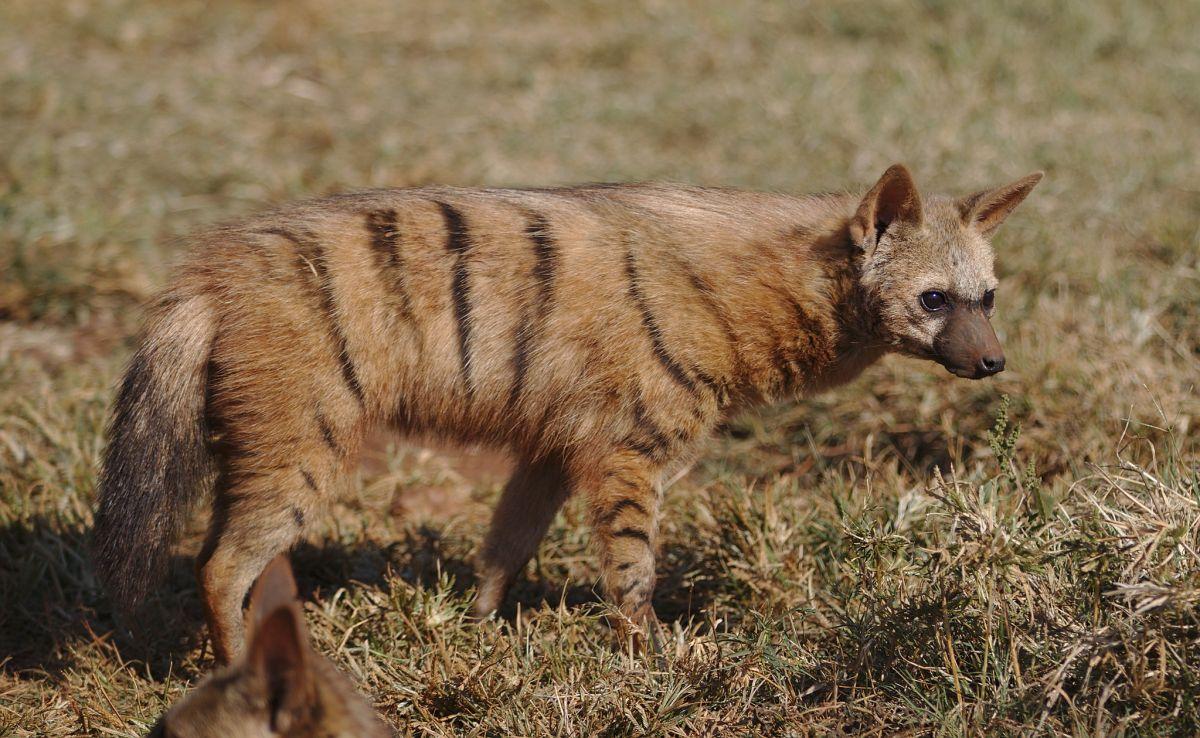
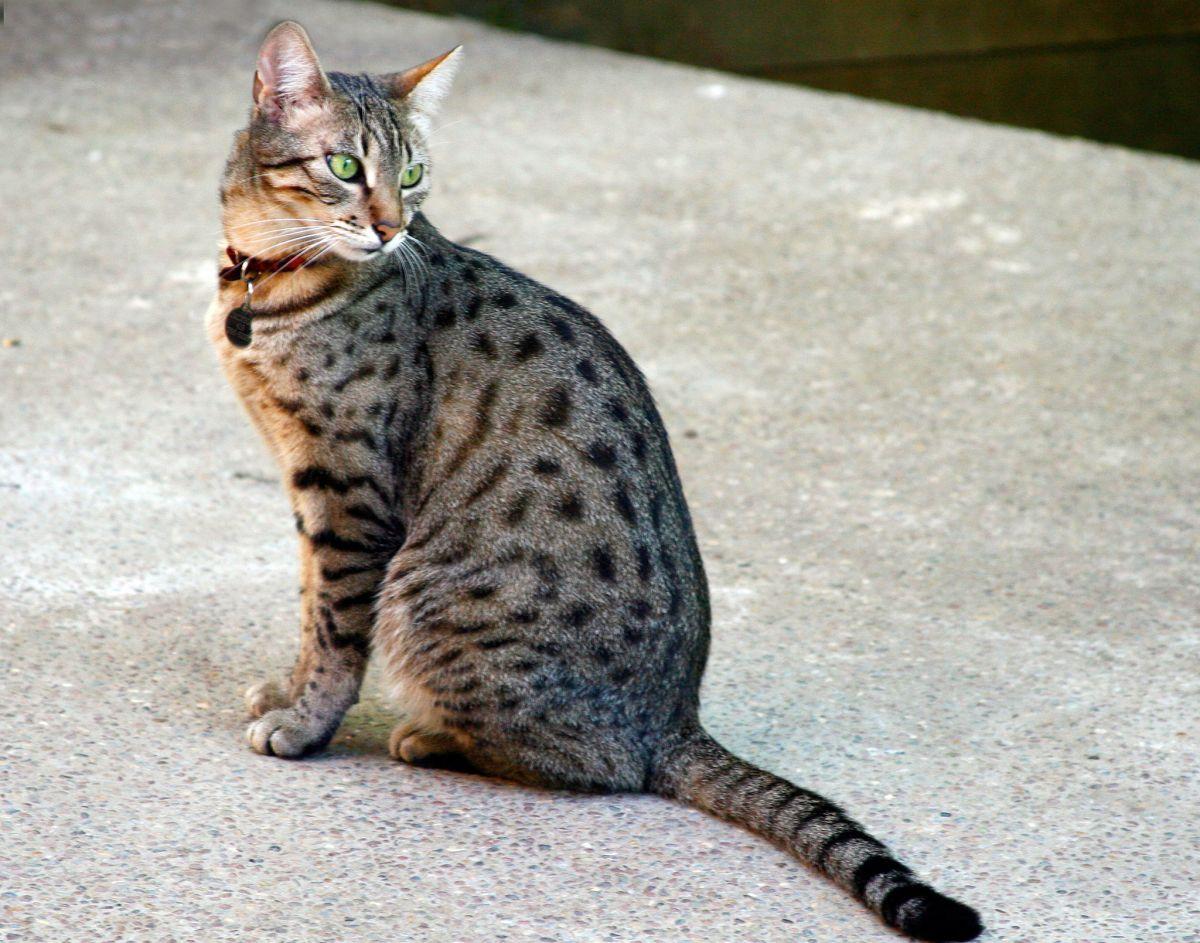
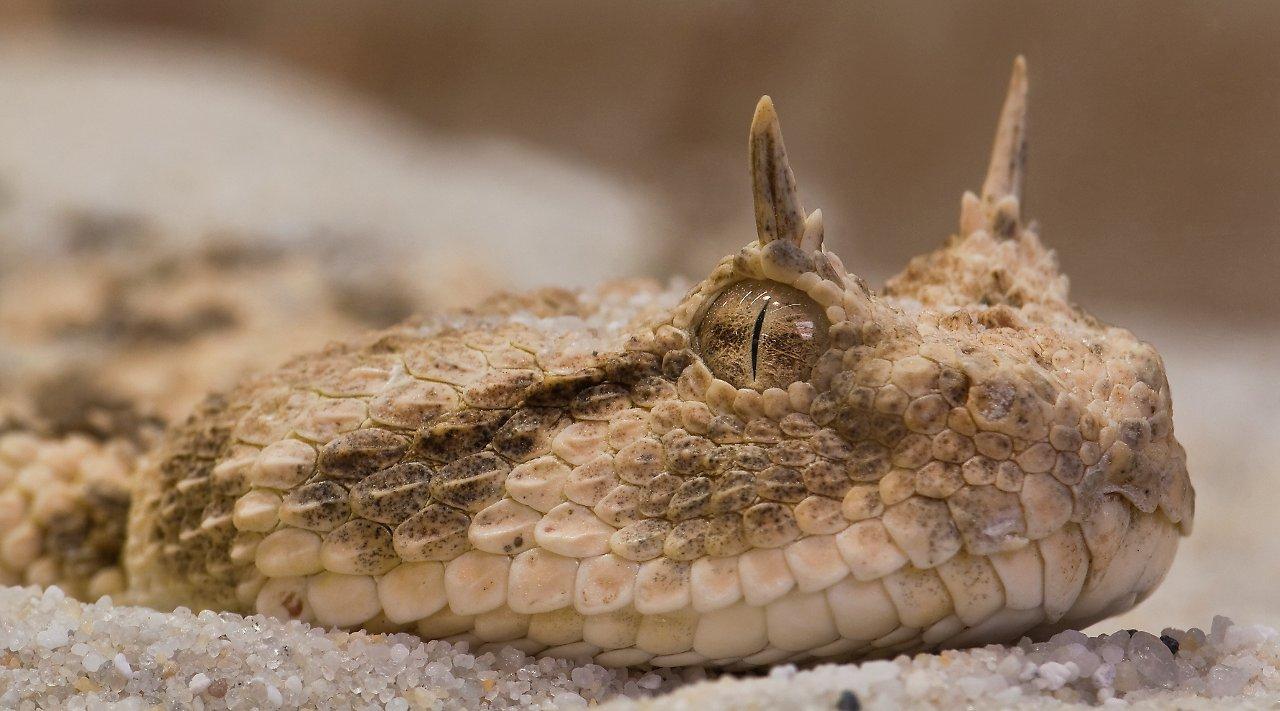
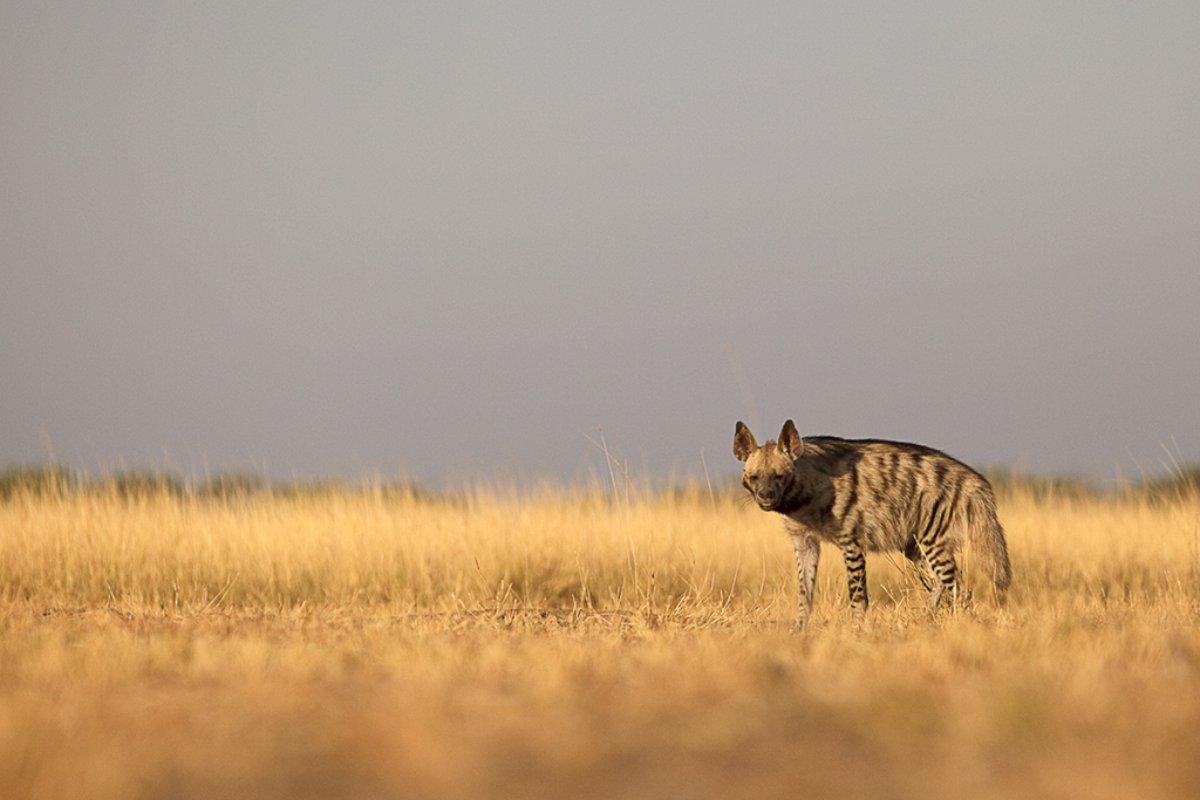
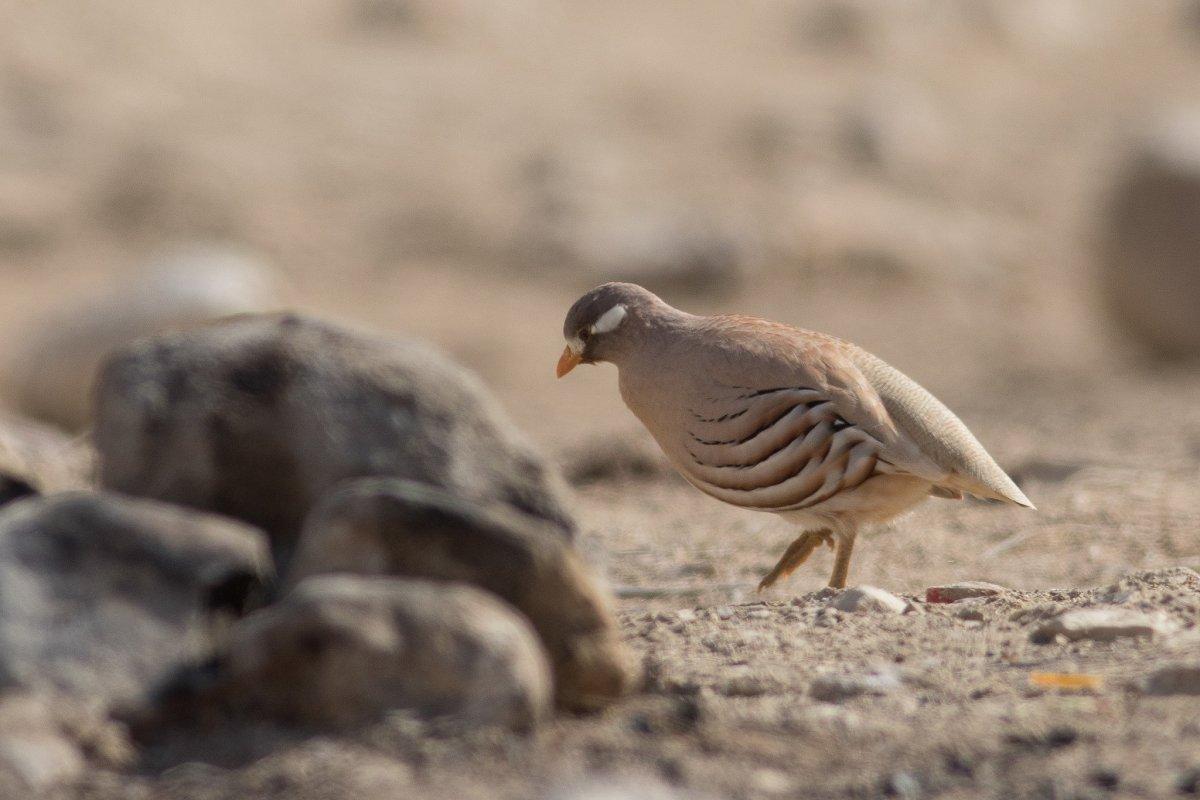
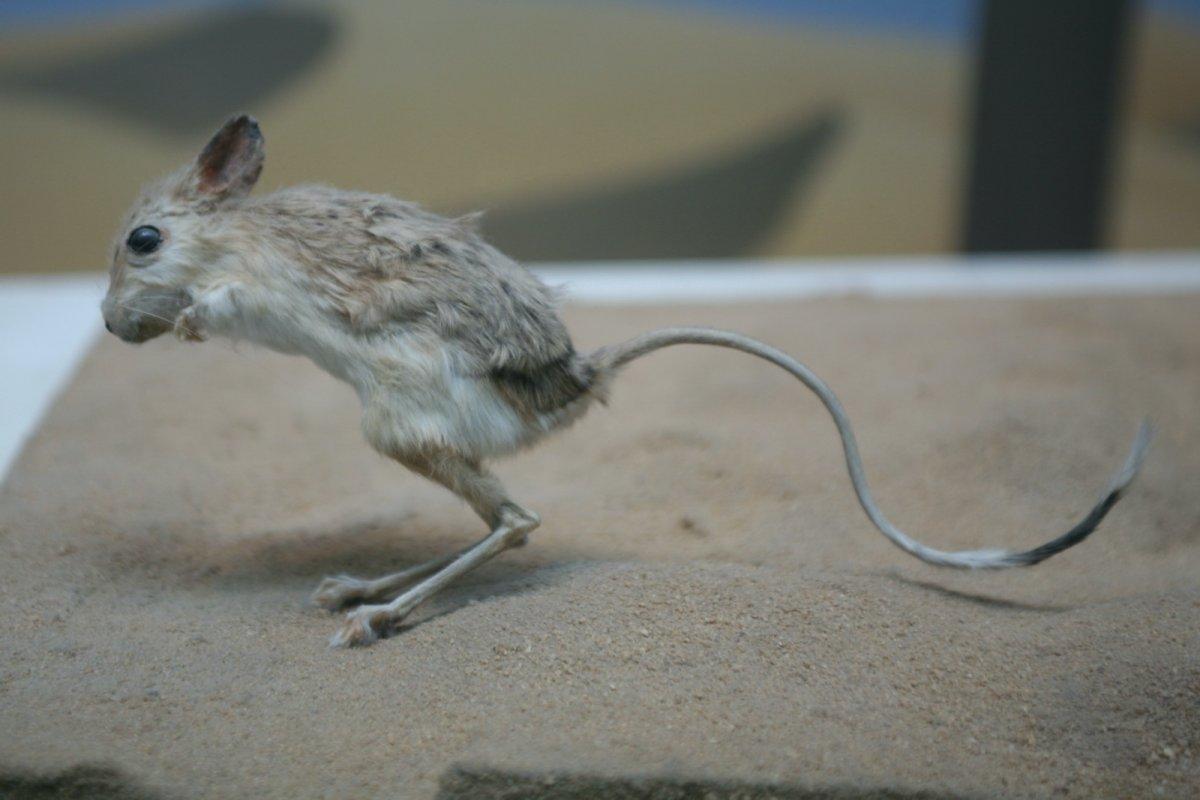

![33 Wild Animals in Malaysia [Wildlife in Malaysia]](https://www.kevmrc.com/wp-content/uploads/2022/12/33-wild-animals-in-malaysia.jpg)
![18 Wild Animals in Zambia [Wildlife in Zambia]](https://www.kevmrc.com/wp-content/uploads/2022/11/18-wild-animals-in-zambia.jpg)
![13 Wild Animals in Somalia [Wildlife in Somalia]](https://www.kevmrc.com/wp-content/uploads/2022/12/13-wild-animals-in-somalia.jpg)